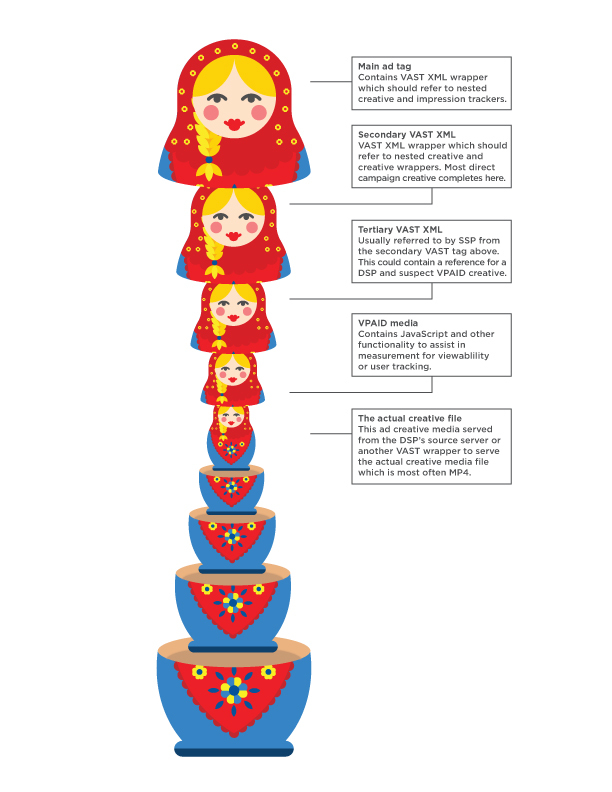I was recently investigating problematic inventory on one of Australia’s busiest sites that used a nested player to override the playback controls of the actual video player in the page. The only way a user could mute or pause the player was to close the browser or tab.
Besides the obvious problems, namely that this is incredibly annoying to both the end user and the site owner, the fact that something like this could be permitted on a site or network is also indicative of even bigger issues in our industry.
Digging deeper, there were too many Digital Video Ad Serving Template (VAST) wrappers on the ad unit and a total of 11 impression trackers where you’d normally expect only two. These layers negatively impact viewability measurement and lead to major problems like degraded user experience, latency, or no ads playing at all.
What’s even worse, this ad facilitated false completion data for that video campaign.
How is this happening?
The tip of the iceberg
Until new viewability measurement methods come into play, vendors are limited to measurement via Video Player Ad-Serving Interface Definition (VPAID). VPAID is open to exploitation because it is more accommodating than the more strict VAST method of video ad ingestion. This is especially true because a VPAID tag can be made up of JavaScript, which means room for creativity, as well as abuse.
It’s not uncommon to have interactive video ad units or nested video players appear within video ad content as a result of allowing VPAID on a network, which is terrible for the industry as a whole. Simply put, the way we implement analytics to measure viewability is breaking things.
It’s time to call for an end to Russian nesting doll hacks in video ads. Clean ads mean a better customer experience and better ratings, so there is nothing more important than yield and making the most of every ad opportunity. So what can we do about it?
-
Segregate video inventory: For direct, programmatic, Over The Top (OTT) television, Video On Demand (VOD), live streaming, desktop, and mobile web, segregate your video inventory to play up to the weaknesses and strengths of each.
-
Empower a good SSP: Reputable supply-side platforms are worth the investment to help maintain ad quality. SSP’s can provide services to help teams create rules around file types that are allowed on sites or networks.
-
Enforce particular media types for devices: Manage the applications and sites that deliver nested hacks to the end user and define the rules that determine what ad media users get.
-
Don’t use VPAID: Set up rules with the supply-side platform and run programmatic guaranteed campaigns, ensuring they don’t carry nested players, tracking pixels, or unwarranted tracking.
-
Tool up and educate Ad-Ops: Educate Ad-Ops teams on how to read video ad tags for tell-tale signs of rogue code, tags, wrappers, and pixels. Give them tools like debugging consoles to add invaluable resources to their kits.
The way forward
In addition to the tips above, which can be applied to client side ad insertion, Brightcove’s Server-Side Ad Insertion can solve many ad management issues and then some. Our technology mitigates both ad quality and ad blocking concerns. We are able to help customers reach and monetise audiences, regardless of platform, device, network or potential hurdle while still delivering a premium, TV-like experience across any device.
This Russian nesting doll issue isn’t the only one we have to contend with in our industry, and Brightcove is focused on tackling the big problems in video ad quality and management head-on.
This post is the first in a series that will discuss how to rise above key challenges like header bidding, inspecting vast tags, and latency. Keep an eye out for the next installment.
See how we can help you


